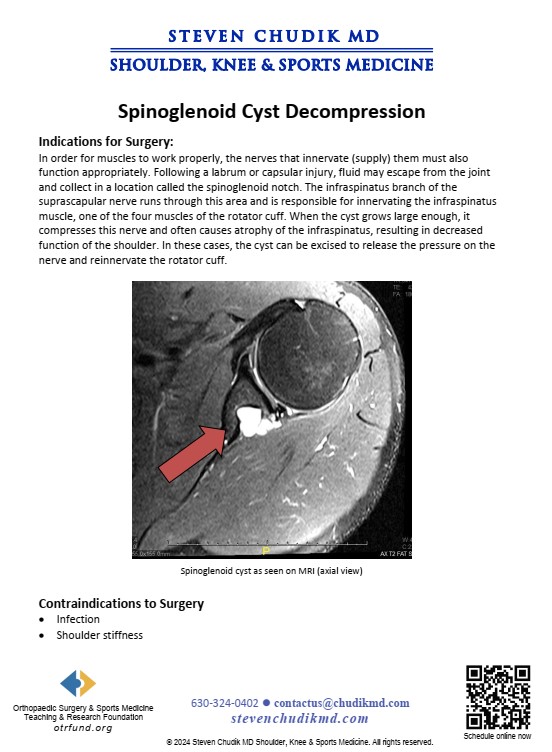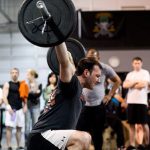 Arthroscopic expert, Dr. Steven Chudik, cites prompt treatment, thorough evaluation and physical therapy as key factors to successful return from shoulder dislocation injury
Arthroscopic expert, Dr. Steven Chudik, cites prompt treatment, thorough evaluation and physical therapy as key factors to successful return from shoulder dislocation injury
For muscles to work properly, the nerves that innervate (supply) them must also function appropriately. Following a labrum or capsular injury, fluid may escape from the joint and collect in a location called the spinoglenoid notch. The infraspinatus branch of the suprascapular nerve runs through this area and is responsible for innervating the infraspinatus muscle, one of the four muscles of the rotator cuff. When the cyst grows large enough, it compresses this nerve and often causes atrophy of the infraspinatus, resulting in decreased function of the shoulder. In these cases, the cyst can be excised to release the pressure on the nerve and reinnervate the rotator cuff.
Dr. Chudik approaches the shoulder arthroscopically through small incisions (arthroscopic portals). The surgery generally is performed as outpatient surgery (you go home the same day). Dr. Chudik uses the small incisions to look in the shoulder joint with a camera and special instruments are used to identify and excise the cyst. At this time, Dr Chudik also will look for any labral or capsular pathology allowing the fluid to escape the joint and make any necessary repairs. If any repairs are needed, the patient can expect to be immobilized in a sling for six weeks followed by four to six months of formal physical therapy.
You may return to unlimited activities when there is no pain and full shoulder range of motion, muscle strength and endurance, and functional use has been restored. This usually requires four to six months following spinoglenoid cyst decompression. Dr. Chudik will tell you when it is safe to resume all activities. Dr. Chudik has special protocols for returning to golf.
Learn More
 Repeated shoulder dislocations and surgeries don’t sideline former rugby player Shawn Bastic
Repeated shoulder dislocations and surgeries don’t sideline former rugby player Shawn Bastic
Dr Steven Chudik founded OTRF in 2007 to keep people active and healthy through unbiased education and research. Click to learn about OTRF’s free programs, educational opportunities and ways to participate with the nonprofit foundation.
1010 Executive Ct, Suite 250
Westmont, Illinois 60559
Phone: 630-324-0402
Fax: 630-920-2382
(New Patients)
550 W Ogden Ave
Hinsdale, IL 60521
Phone: 630-323-6116
Fax: 630-920-2382
4700 Gilbert Ave, Suite 51
Western Springs, Illinois 60558
Phone: 630-324-0402
Fax: 630-920-2382

© 2025 © 2019 Copyright Steven Chudik MD, All Rights Reserved.
